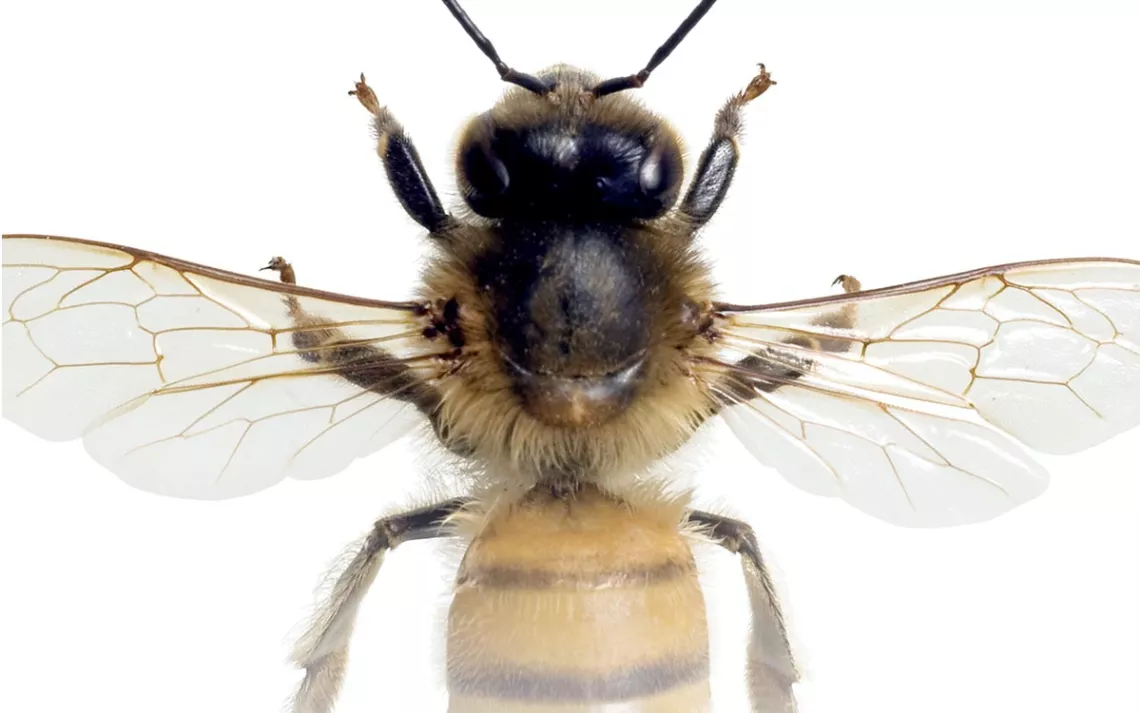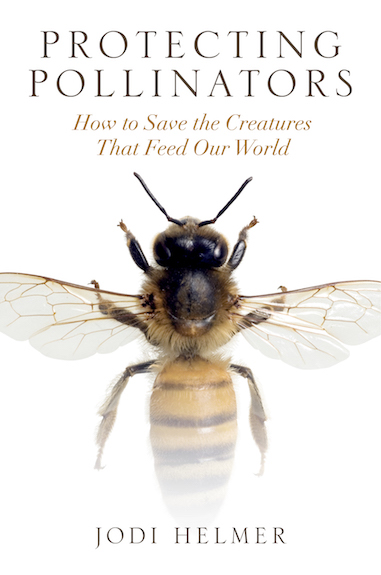Does the Mass Rearing of Butterflies Hurt More Than Help?
An excerpt from Jodi Helmer's new book, "Protecting Pollinators"


From Protecting Pollinators: How to Save the Creatures That Feed Our World, by Jodi Helmer. Copyright © 2019. Reproduced by permission from Island Press, Washington, DC.
Three rows of children sat on the steps in front of Davidson College Presbyterian Church, all eyes focused on two mesh cages. The preschoolers, some with handmade crowns perched on their heads, others wearing butterfly masks that made them look like lepidopterist superheroes, had been waiting for this moment. Their teacher held up a stuffed creature and asked, “What is this?”
Their voices rose in unison. “A CATERPILLAR!” “And what is it after it’s a caterpillar?”
“A CHRYSALIS!”
“And what is it after it’s a chrysalis?” “A BUTTERFLY!”
The annual spring butterfly release capped off a curriculum on pollinators. Preschool director Kristin Clark explained that the children had learned about the lifecycle of the fragile creatures. This was the finish line to their pollinator marathon. They had been training for this day. Literally. The children practiced the program, which included songs like “Fly, Fly Butterfly” (sung to the tune of “Twinkle, Twinkle Little Star”) and learned what to do if one of the 300 released butterflies landed on them. The advice: stay still.
Residents of the North Carolina college town fluttered in to witness the event. A towheaded toddler wearing glittery butterfly wings over her sundress raced toward the mesh cage, her arms outstretched, shouting, “Come here, butterfly! Land on me!” before her mom could pull her back. Associate Pastor John Ryan recited a prayer that included the lines, “Oh little butterfly, messenger of God, fly away as high as you can go; fly, fly, little wings, fly where the angels sing; go now, find the light and keep the joy in your sight.” Then a teacher from each of the nine classes opened an envelope or unzipped the mesh habitats. The colorful monarchs, giant swallowtails, and painted ladies took flight and all of the children, squealing with delight, tipped their faces toward the sky. A butterfly landed on the shoulder of a little boy wearing a superhero T-shirt and a butterfly mask and, just as he practiced, he stood still while his classmates gathered around in awe.
Davidson College Presbyterian Church has included monarch releases in its preschool curriculum since 2003. Clark orders both butterflies and caterpillars from Insect Lore, a butterfly breeder that has mailed more than 50 million caterpillars to be used in educational settings. Preschoolers watch the transformation from caterpillars to butterflies and help raise the colorful winged creatures, feeding them citrus fruits and plants from their nectar garden.
“We believe that children learn by doing, seeing, touching, and being part of things, so our curriculum is based around hands-on experiences,” Clark explains. “I think that to teach them about butterflies and get them excited about the lessons, we need to get them up close and personal.”
Clark is aware that there is some controversy around butterfly releases but says the preschool hasn’t received any criticism about the program. Instead, she believes parents appreciate that their children are not only learning about the transformation from caterpillar to chrysalis to butterfly but they are actually witnessing those changes and developing a deeper understanding of the lifecycle. “Deep down, I hope that taking care of the butterflies before we let them go creates special memories and builds that foundation that makes them want to care for other creatures,” she says. “We’re doing our part to give back to nature by creating more butterflies.”
Despite the educational potential, a group of monarch researchers and conservationists have decried the practice of purchasing mass-reared butterflies from commercial breeders and releasing them, expressing fears it could harm wild monarch populations and disrupt important research that is critical to their conservation.
Populations in Peril
Researchers started surveying monarch populations in 1993. Some of the highest population numbers were recorded during that time—an estimated 682 million monarchs were counted in 1997—but the number of butterflies continued plummeting. Thanks to factors like habitat loss, climate change, and pesticides, populations of the beleaguered butterflies have been in freefall, with just 25 million monarchs recorded in 2014. The population showed a rebound to 150 million in 2016, but the numbers are still down 78 percent from the population highs in the 1990s. The lowest overwintering populations have been recorded in the last decade, including an all-time low of 0.67 hectares in 2014. Experts warn that the population is still too small to be resilient to threats.
Sarina Jepsen, director of endangered species and aquatic programs for the Xerces Society, explains that releasing monarchs “disrupts our ability to understand the natural movements of monarchs. In the western US, the Xerces Society and other researchers are currently trying to understand where and when monarchs breed so that we can best focus conservation efforts. Mass releases of monarchs could really interfere with this research.”
News that monarch populations are in peril has led some enthusiasts to take their devotion to the extreme, setting up their own miniature monarch nurseries and raising the butterflies at home.
Leslie Uppinghouse, horticulturalist at Lady Bird Johnson Wildflower Center, will never forget receiving a call from the front gate that two unexpected packages were waiting for her. She tore into the boxes and found egg cartons filled with chrysalises; each one had been hot- glued to a piece of dental floss so it would hang in the cartons. A few of the monarchs had hatched in transit and died. The pre-emergent monarchs came with a note explaining that the caterpillars were raised on tropical milkweed in a northern climate and the novice breeder shipped them to Texas in the hopes the temperate climate and knowledgeable staff at the Wildflower Center could help the monarchs survive. The staff managed to save a few of the monarchs but most perished.
“This was someone who really cared about monarchs and spent a ton of time and energy raising and shipping them to us, and it all went very wrong,” Uppinghouse says.
Highlighting the possible downsides of good intentions is not meant to dissuade public efforts to help pollinators. Rather, letting concerned citizens know what could go wrong—and providing education and resources to minimize those unintended consequences—can help pollinator populations bounce back. Experts support initiatives to protect pollinators, including some of the “harmful” practices such as monarch releases, maintaining gardens of tropical milkweed, and beekeeping.
Jepsen acknowledges that hands-on experience with wildlife, including monarchs, can be valuable to children, helping them understand the fragility of the species and the need to be good stewards of the environment to save them. Rather than ordering the butterflies online from commercial farms, Jepsen advocates finding monarch caterpillars or caterpillars of other locally common butterflies or moths and bringing them into the classroom to observe, which minimizes the potential downsides of releasing mass-reared butterflies.
“It’s really important to understand the species that you’re trying to protect. Often, we need to act before we fully understand why a species is declining and it’s really important to continue to do research to answer the most relevant questions and to continually adjust conservation strategies as new research becomes available,” she says.
 The Magazine of The Sierra Club
The Magazine of The Sierra Club



